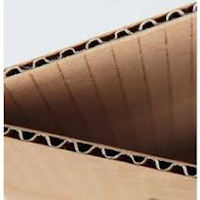You need:
- colored cardboard A3 size
- sponges
- paint rollers
- strips of ribbed cardboard
- bubble wrap
- tempera paint
- brushes
- scissors
- glue
Read
here about Kandinsky's concentred circles.
Organisation
Divide this lesson in two moments. For lesson 1 (step 1-4) create four table groups where students can print. Divide students among these four groups. When someone is ready, he can go to the next group. In this way students rotate between the groups. In lesson 2 (step 5) the individual parts are combined into a work of art and students sit in their own place in the classroom.
Group A: printing with sponges. One sponge per color. Some paper plates with tempera paint and a paint roller on each plate.
Group B: printing with cardboard. Lay out cardboard strips about the width of a ruler. Spray s few colors of tempera paint on paper plates. Students smear the head side of the cardboard with a brush, see picture.
Group C: printing with bubble wrap. Lay out A4 drawing sheets and pieces of bubble wrat. Students roll in the bubble wrap with a paint roller and print it on a sheet.
Group D: painting concentric circles. Place thick drawing paper, tempera paint and paper plates here.
What should you do?
Step 1: Place the cardboard upright in front of you. Stamp approximately 1/3 of the bottom full with a sponge and paint. Don't rub, stamp!
Step 2: Stamp with the cardboard strips horizontal and vertical stripes above the sponge strips.
Step 3: Use a paint roller to roll a piece of bubble plastic with tempera paint and print it on a white sheet. Let dry.
Step 4: Fold a white A4 sheet into 6 squares. Paint 6 different concentric circles in each square like Kandinsky did. Each circle has 3 colors. Let dry.
Step 5: Cut the circles. Draw a symmetric vase on the back side of the bubble plastic print and cut out. Paste vase and flowers on the colored cardboard.
all works of art are made by students of grade 3
Elements of art: color, nuance, shape, line
Techniques: printing with different materials, painting, cutting, pasting.





.jpg)













































